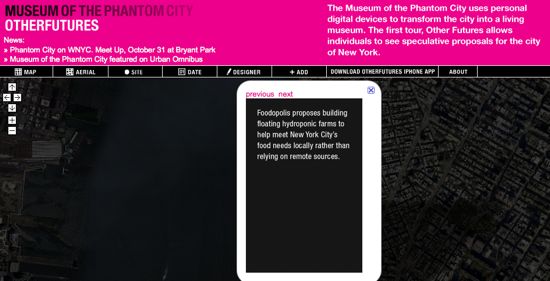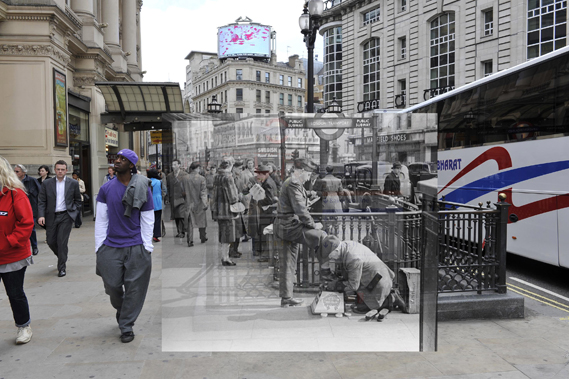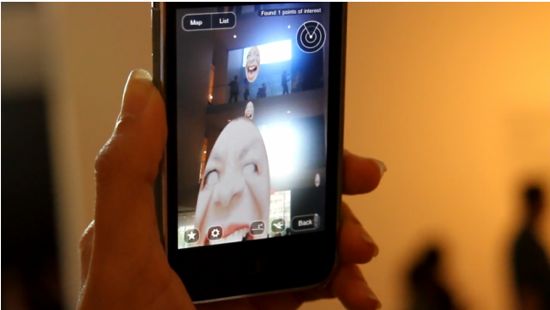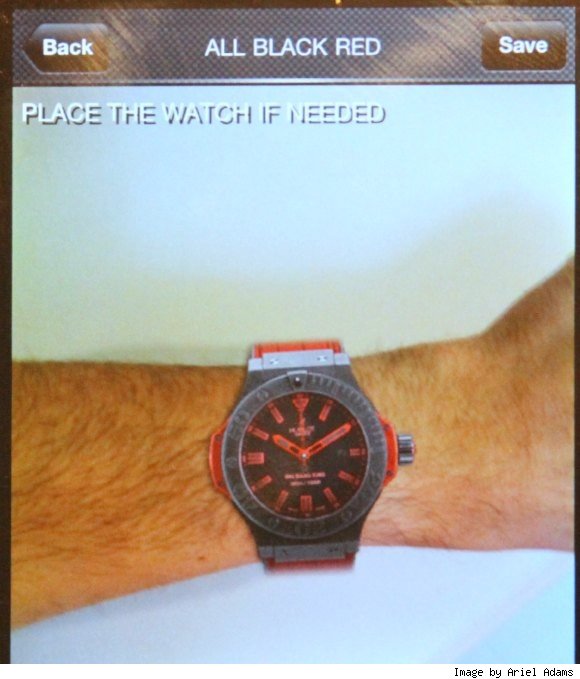Hey, so, I’m not going to do links to Consumed from this site anymore — a notable moment, since I basically created this site for that purpose, back in the days when it was impossible to follow Consumed via RSS any other way!
As of right now, you can follow the column through any of these methods:
Tomorrow’s column now available through all those sources right now. Pick your poison.
And happy new year.
Posted Under:
Consumed by Rob Walker on January 1, 2011
Comments Off on Consumed links
Recently I had the pleasure of giving a brief talk about the Hypothetical Development Organization at the excellent Grand Arts, in Kansas City. In preparing for that, I was doing a lot of research to try and figure out how I want to define “architecture fiction,” and along the way I started collecting possible examples involving “augmented reality.” Whether these examples really count or not (beside the point for the moment), I wanted to collect my thoughts on that particular diversion somewhere.
Thus this post.
I wrote about augmented reality in Consumed back in November 2009, but most of the examples that I could find at the time didn’t really interest me that much. (Basically augmented reality refers to data overlaid on what you see when you peer at the world through your cell phone – Yelp reviews floating in front of a restaurant, that sort of thing.)
But looking around again more recently I found more stuff that I found at least potentially interesting. Each of the following examples strikes me as compelling on some level, and maybe hinting at interesting things that might be done in connection with, oh, I don’t know, something like Hypothetical Developments. I welcome other examples or reactions, naturally.

First up: Irene Cheng and Brett Snyder created an app called Museum of the Phantom City. In this case, the user gets information about proposed utopian projects in New York City that never came to pass.


Unbeige explained: “Using GPS, you can use the app to wander around the streets of NY and absorb a little history about what never was as you come to it, along with some interactive bits surrounding these invisible sights.”

Next: The Streetmuseum app, which adds historical information and images to geographic locations. I believe it is London-specific at this point. (I doubt that the above example is how it really looks when you actually use the app.) Bruce Sterling is a fan.

The above, Tamiko Thiel’s “Art Critic Matrix,” was part of a show called “We AR in MOMA,” which used the Layar augmented reality browser. Basically this was a show set geographically (and without permission, for what it’s worth) inside MoMA, but that could only be seen through a smartphone.

Finally, this is something called ARStreets, characterized as a “location-based game” for the iPhone. Basically you can add a graffiti-style “tag” to a place, visible only to other users of this app. I’m not really crazy about this, but it seems to count as an example of … whatever the hell I’m talking about.
What I’m trying to figure out is whether we can do something like for this Hypothetical Development: If someone who visited one of our sites could see, on their smartphone, our rendering of that building’s Hypothetical future, and read our description. Seems like this would be do-able, no?
We know what happens next: This hobby morphs into a successful business. But Boing Boing’s version of that tale is a little different. Frauenfelder and his partners didn’t rake in investment capital, recruit a big staff and a hotshot CEO, or otherwise attempt to leverage themselves into a “real” media company. They didn’t even rent an office. They continued to treat their site as a side project, even as it became a business with revenue comfortably in the seven figures. Basically, they declined to professionalize. You could say they refused to grow up.
The full story is in the December 2010/January 2011 issue of Fast Company, or here.
Posted Under:
rw by Rob Walker on November 30, 2010
Comments Off on In Fast Company: The unlikely success of BoingBoing
 HIGHFLIER
HIGHFLIER
Considering the G650 not as a symbol, but as a designed, engineered, manufactured object
When I learned that Gulfstream completed a version of the tricked-out interior on one of the five G650s it has built so far, I asked if I could have a look.
Read the column in the November 28, 2010, New York Times Magazine, or here.
Discuss, make fun of, or praise this column to the skies at the Consumed Facebook page.
Posted Under:
Consumed by Rob Walker on November 28, 2010
Comments Off on In The New York Times Magazine: The Most Expensive Gulfstream Yet
I wrote a little thing about the Sarah Palin Show, published by The Awl, here. (“There is one element of the show that is potentially not-boring: Keep your eye on Willow Palin.)
Posted Under:
rw by Rob Walker on November 17, 2010
Comments Off on On The Awl: Willlow Palin’s Time Is Ripe
A couple of readers complained about aspects of a recent column about bad news and The Gap and their letters to the editor are published here. (Updates October 29, 2010 Consumed.)
Rob Horning considers the Duane Reade in Williamsburg, and how it might relate to Walgreens’ “food oasis” strategy. (Updates November 14, 2010 Consumed.)
The Instagram app is the latest thing in digital pictures that look analog, with LOMO-esque effects, plus a “bonus”: you can “instantly share.” (Updates July 23, 2010 Consumed.)
Pop-up stores keep popping up. (Updates December 18, 2005 Consumed.)
Anti Advertising Agency notes that while Terracycle upcycles waste, it also “creates zombie advertising and branding” by using spent packaging of brands that co-sponsor some of its efforts. (Updates, in different ways, May 20, 2007 Consumed and September 24, 2009 Consumed.)
In search of the next Snuggie. (Updates March 15, 2009 Consumed.)
Posted Under:
Update by Rob Walker on November 15, 2010
Comments Off on Assorted Updates
 FRESH APPROACH
FRESH APPROACH
The marketplace created the “food desert” problem; can it also solve it?
The experiment in creating these “food oases” is intriguing because it involves a well-known retail brand not typically associated with groceries — and, really, because it involves a well-known retail brand at all.
Read the column in the November 14, 2010, New York Times Magazine, or here.
Discuss, make fun of, or praise this column to the skies at the Consumed Facebook page.
Posted Under:
Consumed by Rob Walker on November 14, 2010
Comments Off on In The New York Times Magazine: Walgreens tries “food oases”

Go logo!
I haven’t mentioned the Unconsumption project all that much here lately, but the Unconsumption Tumblr continues to get more awesome, and its audience keeps growing as a result. Not only that, but super-excellent Unconsumptioneer Molly Block has made the @Unconsumption Twitter feed a fun, vibrant, useful, and fast-growing entity of its own.
And now I’m pleased to pass along two pieces of news.
- First, we’ve added another contributor: Lee Sachs is a writer, user experience consultant, and filmmaker, in New York, NY. He is also the curator and creator of the always-entertaining Museum of Marketing Madness; check it out. In addition to contributing to our flagship Tumblr, he’s putting some fresh thought into what we can do improve the Unconsumption wiki. Stay tuned!
- Second: We have a logo! Please meet (above) the symbol we have come to refer to amongst ourselves as Mr. Cart, created by Unconsumptioneer Clifton Burt, who is thoroughly wonderful. I’m really excited about this.
Now you might wonder: Why does Unconsumption need a logo? Are we opening a Zazzle shop or something? No. As I’ve said in the past, I consider the Unconsumption project to be in part an experiment in branding that is connected to a set of behaviors, instead of a line of products. In fact, I consider Unconsumption to be, in effect, the ultimate lifestyle brand: It’s just a lifestyle, one that does not require any set of buyable objects or services. But just because we aren’t selling anything doesn’t mean our “brand” can’t benefit from a visual identity-symbol. And now we have a great one!
I have a few thoughts about how to propagate such a symbol without advertising or selling merch, for the benefit of spreading the underlying idea(s). So stay tuned for that, too. If you have ideas about what a brand-with-no-products might do with its logo, please chime in, I’d love to hear. And of course, if you find value in the Unconsumption notion, help us spread the word.

I can’t shut up about the future of watches: Above is a silicon watch casing designed to fit a Nano. (Updates this, and the trail of links you’ll find there.)
Designers Rich Brilliant Willing highlighted in T. (Updates April 20, 2008 Consumed.)
Fail Whale artist Yiying Lu hired to create Conan O’Brien Pale Whale. Also here’s a Fail Whale hat. (Updates February 12, 2009 Consumed.)
Rob Horning on Jonah Lehrer on Marion Nestle on Mexican Coke. (Horning wins.) (Updates October 2009 Consumed.)
Ad Age: “Foxconn Crisis Proves Need for Global PR.” Well, that might not be the first thing I would have put on my list of what it proved, but the manufacturer has in fact hired a major PR firm. (Updates June 25, 2010 Consumed.)
Even trivial evidence of similarity makes one like to do someone else a favor. This echoes research that inspired one of the designs in the shockingly underrated 48 Hour T-Shirt Project.
 STATS APPEAL
STATS APPEAL
A dating service converts info-mining into buzz.
Many, and possibly most, of the people spreading OkTrends’ findings are, like me, not really interested in using the actual OkCupid service. Is this really good for business?
Read the column in the November 7, 2010, New York Times Magazine, or here.
Discuss, make fun of, or praise this column to the skies at the Consumed Facebook page.
Posted Under:
Consumed by Rob Walker on November 7, 2010
Comments Off on In The New York Times Magazine: Marketing with data
I have a short thing on The Atlantic’s site today, noting the significance of the recent elections to ROFLCulture (and vice versa): The Tea Party, don’t forget, was born of ROFL. Here.
Posted Under:
ROFLculture,
Update by Rob Walker on November 5, 2010
Comments Off on On The Atlantic.com: History-making ROFL
Dieline visits Method. Pretty interesting! (Updates February 29, 2004 Consumed.)
Joel Johnson visits Foxconn. Pretty interesting! (Updates June 25, 2010 Consumed.)
Kurt Andersen’s Studio 360 has an episode about Buffalo Bill. (Updates November 11, 2007 Consumed; also if you’re interested in Buffalo Bill and wild west shows’ surprising global influence, see this Murketing post with bonus info that I published at that time.)
The Atlantic’s website discovers “heightened consciousness about the role and function of the conventional book,” and points out the books-into-art work of Brian Dettmer. (Updates August 6, 2010 Consumed; see also extensive exploration of this general subject here and here.) [Via: Unconsumption.]
Bonus update: It’s come to my attention that Gwanker floated “fauxhemian” as a new term, earlier this year. The term is a decade old. (Updates January 23, 2000 essay.) Please note that Gwanker is an original coinage. [Thanks: Mark G.]
Posted Under:
Update by Rob Walker on November 5, 2010
Comments Off on Assorted updates

This isn’t really an update, and it isn’t quite an example of counterfunctionality, but since the subject of watches vs. tech has come up in an update, and because I’m always blathering about counterfunctionality, this is something I feel compelled to note:
Fancy watch maker Hublot now has an app that, among other things, allows you to point your smartphone and at your wrist and see how it would look, if you were sporting one of its products. Details here.
Thanks again, Piers…
Selectism on “MUJI” Book from Rizzoli. (Updates January 9, 2005 Date Consumed). [Thanks J.J.]
Time says Mexican Coke “may be a myth.” For reasons that are not clear the article is sort of addressed to “hipsters.” For reasons that also aren’t clear, my column is described as “a trend piece.” Listen, Time Magazine, whatever it is I do, it sure as hell isn’t trend pieces for hipsters. Get a clue. (Updates October 8, 2009 Consumed.) [Thx; Alex W.]
Microsoft’s object-tagging system was, um, not included in the column I wrote about such matters, but apparently has taken off: 2 billion items tagged, half in the past four months. Not sure about content details, but still. [Updates 9/3/10 Consumed.]
Cool short piece by Matthew Battles in The Atlantic on the decline of the wristwatch and time as an app. [Updates , October 28, 2007 Consumed and its spinoff, the world-famous Counterfunctionality: A Gallery.]
A character on Mad Men is publishing a book — meta, says Unbeige. It may interest you to know that a soap opera character from One Life To Live published a best-seller several years ago. (Updates May 1, 2005 Consumed.)
Coupon redemption up 23% in 2009, “first gain in 17 years,” says Ad Age. (Updates July 27, 2008 Consumed.)
Okay, so like I said before, if you have updates or requests, let me know. Last time I’ll ask!
 GOOD NEWS, BAD NEWS
GOOD NEWS, BAD NEWS
Can negative publicity help? The research says yes — under the right circumstances.
“Can negative publicity actually have a positive effect?” researchers ask in an article published this month in the journal Marketing Science. “And if so, when?”
Read the column in the October 31, 2010, New York Times Magazine, or here.
Discuss, make fun of, or praise this column to the skies at the Consumed Facebook page.
Posted Under:
Consumed by Rob Walker on October 31, 2010
Comments Off on In The New York Times Magazine: When is bad news good news?




 "
"






 HIGHFLIER
HIGHFLIER













 Kim Fellner's book
Kim Fellner's book  A
A